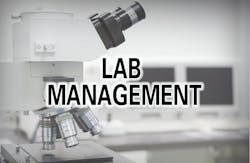A statement frequently used in healthcare medicine which also applies to quality systems used in the clinical laboratory is, “prevention is better than cure.” There’s little doubt that anyone who works in a lab knows that the prevention of adverse incidents is preferable to implementing corrective actions once an issue occurs. However, in today’s healthcare economic environment, many lab management teams are finding their resources are stretched to the breaking point, forcing them to make worrisome cuts that could potentially affect the quality of patient tests. Applying cost of quality principles is a solution that assists labs in making fiscally sound decisions while maintaining high standards of quality.
Quality processes have a clear relationship with laboratory costs. If more money is invested in good quality processes, there will be both fewer errors and decreased costs related to failure recovery. If little attention is given to good quality processes, failures (and the corresponding cost of poor quality) will increase.
A cost of quality mindset not only works to streamline lab processes, reduce waste, and cut unnecessary expenses, but invests in positive quality processes that can ultimately drive down overall failure costs for both the short and long term.
It is important to remember that quality issues are usually due to inefficient or flawed laboratory processes, and high failure costs are rarely the fault of lab staff.1
Why quality principles are so essential
Customers, clinicians, and patients should always be the first priority for a healthcare business. Every laboratory should strive to provide customers with superior and dependable services, including implementing a cost of quality approach. While implementing additional quality processes might seem like an unnecessary expense, the subsequent reduction of high failure costs more than justifies the initial expenses. It takes both effort and financial investment to produce high quality services, but it is far more costly to deal with the failures that arise from neglecting quality. High quality efforts reduce waste and help the laboratory maintain a more strategic and effective budget.
Keep in mind, if money is not spent on quality activities, the number of errors and failures will be much higher, potentially presenting daunting economic consequences.
What are the costs of quality?
First, to understand how quality costs affect the lab, it is important to recognize that there are both good and poor quality costs.
Good quality costs are divided into two categories:
- Prevention costs—spent on quality activities intended to proactively prevent problems from occurring, and
- Appraisal costs—spent on quality activities intended to identify current issues and prevent them from happening again.
Poor quality costs attempt to deal with the consequences of quality failures (also called non-conforming events) which can be very expensive. Poor quality costs are also divided into two categories:
- Internal failure costs—spent on resolving errors before they leave the lab’s control, and
- External failure costs—spent on resolving errors after they have left the lab’s control. These are the highest quality costs.
While good quality costs are usually easy to identify in a lab budget, poor quality costs are not always as straightforward; failure costs don’t have their own category and are often folded into the rest of the budget.
For example, it is easier to identify how much is being spent on proficiency testing or preventive maintenance than it is to determine how expired materials or invalid instrument runs affect the budget. This means that labs may not have a clear picture of how much money and time failures are costing them. Chances are, a laboratory is spending far more on failure costs than expected.
Types of quality cost
Prevention costs prevent problems from happening in the first place. Examples include:
- Quality management system
- Quality planning
- Quality improvement activities
- Quality education
- Validation of lab processes before they are implemented
- Initial staff competency assessments
- Preventive maintenance
Appraisal costs assess service and product quality. Examples include:
- Ongoing competency assessments
- Tracking quality indicators
- Internal audit programs
- External accreditations
- Instrument calibration
- Sample and reagent inspections
- Quality control (QC) materials and data evaluation
- Proficiency testing
Internal failure costs resolve failures while they are still under laboratory control. Examples include:
- Pre-examination issues (insufficient/flawed/mislabeled samples, data entry errors, etc.)
- Invalid instrument runs
- Expired reagents/materials
- Rework, repairs, retesting
- Downtime
External failure costs resolve problems once they have left laboratory control. Examples include:
- Lost/erroneous reports
- Customer complaints
- Report recalls
- Misdiagnoses
- Damaged reputation
- Lost revenue
- Lawsuits
Understanding the cost of quality in practice
Quality control (QC) materials are an example of a “key appraisal activity.” If QC isn’t run frequently enough, a laboratory might not realize an instrument is malfunctioning and producing invalid results.
For example, let’s assume QC that is typically run once per day is reduced to once per week. If something changes after the QC is performed, the laboratory will not know that the instrument is functioning incorrectly until the following week. The entire week’s results will be called into question. Those results need to be re-evaluated, and if any affected information was submitted from the laboratory, it will need to be retracted. If the results leave the laboratory and reach the customer, those invalid results could negatively affect patient treatment, and have major economic consequences for that laboratory. Dealing with this QC failure quickly becomes much more costly than it would have been to simply run QC more frequently.
How to identify and track quality costs
In order to implement strategic cost of quality procedures, the lab team first needs to understand how it is currently spending money on quality costs. From there, it can identify target areas with high failure rates and opportunities for more comprehensive prevention activities.
It is a good practice to create a list of good quality costs and then ask the laboratory’s budget administrator to help find those costs in the budget. While these costs are relatively easy to identify, it is worth noting that some good quality costs also require labor, which may not be captured. The lab should decide if the amount of labor is high enough relative to the hard costs to make it worthwhile to calculate; if not, they may choose to ignore it.
In order to understand exactly how much money a laboratory is losing on failure costs, it is helpful to take a practical approach to those costs.
How to identify and calculate failure costs
Tackling the identification and calculation of specific failure costs may seem somewhat overwhelming at first but doesn’t have to be. A good place to start is with is Key Performance Indicators (KPIs) or Non-Conforming Events (NCEs). Most laboratories will have statistics about the frequency of failures being tracked as KPIs or NCEs, which will make this first task significantly easier to manage.
First, determine key non-conforming events. These incidents (i.e., lost reports, unacceptable samples, or any other instances of quality failures) can cost the laboratory a great deal of money. When focusing on high severity or non-conforming events, it can be helpful to prioritize those that have the greatest effect on patient care or those that occur the most often.
Next, calculate the failure cost for each non-conforming event. These costs should include all materials needed to recover from the failure and, if necessary, to re-perform the tests. It should also include any labor costs needed to troubleshoot and fix the problem, including time documentation and supervision.
Examine the budget and identify the relevant costs (labor, material, etc.) that were expended because of that non-conforming event. Add up these costs to get an estimate of how much money that specific quality failure cost the laboratory. Each time a non-conforming event occurs, the lab now has a pre-calculated estimate of how expensive that quality failure is.
Last, track how much money each non-conforming event costs the laboratory. Achieve this by simply multipling the failure cost by how many times that event occurs over a certain period of time. This will estimate how much money this recurring quality failure is costing the laboratory over time.
How to reduce failure costs
Laboratories can reduce failure costs through a combined system of prevention and appraisal activities that minimizes waste and variation in lab processes.
It might seem logical to tackle each problem as it presents itself, but relying too heavily on retroactive problem solving can be expensive and inefficient, and makes for very high appraisal costs. Investing more money in advance will actually prevent most problems from occurring in the first place, while still effectively dealing with any issues.
Four strategies for reducing the cost of poor quality
- Begin routinely identifying and tracking quality costs in the budget. This will allow the lab to understand how much is spent on quality and where those quality costs are used.
- Recognize key non-conforming events that affect patient safety, have negative trends, or result in large failure costs. Can these be reduced by prevention or appraisal activities?
- Start reporting Cost of Poor Quality (CoPQ) data, and include failure costs in lab quality reports or non-conforming incident reports. If failure costs are clearly displayed, they will draw attention to areas for improvement. Consistently reporting CoPQ data will also allow laboratories to track how failure costs are affected by various quality improvement efforts.
- Educate staff at every level about cost of quality principles, and share CoPQ data throughout the organization. When everyone understands why certain measures or approaches are implemented, they can work together towards a more cost-effective quality system. CoPQ data will also facilitate healthy conversations with lab administrators or finance departments on the value of quality programs.
Reporting failure costs
When reporting failure costs, make sure they are clear and easy to understand. It is more important to have a useful, practical, straight- forward estimate than a highly specific figure that took extensive time and resources to determine. A simple estimate will serve as usable, actionable information and simplify communication and comprehension.
Conclusion
Instead of conducting limited quality activities and dealing with failures as they occur, it is more cost-effective to develop comprehensive preventive procedures and efficient problem-solving strategies. Integrating cost of quality principles works to the advantage of the lab, the customers, and the budget. Devoting more attention to strategic quality processes can lower costs while making the lab more efficient and reliable.
REFERENCE
- Plebani, Mario. The Detection and Prevention of Errors in Laboratory Medicine. Annals of Clinical Biochemistry: International Journal of Laboratory Medicine. December 2009.
About the Author

Andy Quintenz
serves as Scientific and Professional Affairs Manager for Bio-Rad Laboratories Quality Systems Division.

Paul Williams
is President of MediaLine Communications and serves as a communications and education consultant to leading health and science organizations around the world.
